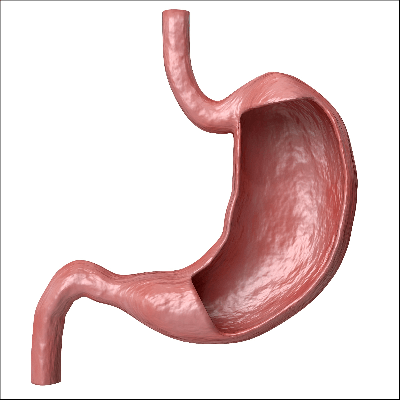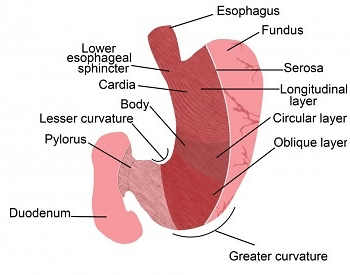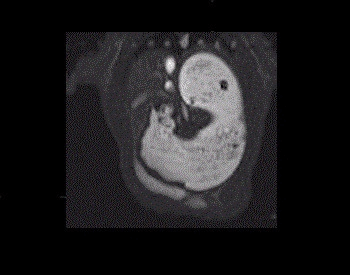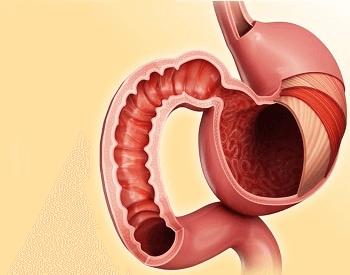
- Organ Name: Stomach
- Organ System: Digestive system
- Organ Purpose: Aid in digesting food
- Organ Location: The gastrointestinal tract
- Organ FMA ID: 7148
- Organ TA ID: A05.5.01.001
19 Stomach Facts for Kids
- The stomach is a hollow, bean-shaped organ that is part of the human digestive system.
- The stomach is part of the human gastrointestinal tract (GI).
- The stomach breaks down food using chemicals and enzymes before it’s passed into the small intestines.
- The stomach produces as acid known as hydrochloric acid and it can dissolve bones and some metals.
- There are four main sections of the stomach, and they are the cardia, fundus, body and pylorus.
- The cardia is where food from the esophagus empties into the stomach.
- The fundus is the upper part of the stomach where undigested food and gases released during digestion are stored.
- The body is the middle part of the stomach where food is processed and digested.
- The pylorus is where digested food is emptied into the first part of the small intestines (duodendum).
- Digested food that leaves the stomach and goes into the small intestines is called chyme.
- Chyme is pulp that contains partly digested food and gastric juices.
- The maximum volume an adult human stomach can hold is between 0.50 and 1 gallon.
- The stomach plays a role in defending your body from pathogens. The acidity in the human stomach can kill certain pathogens and neutralize some toxins.
- A stomach ulcer, also known as a gastric ulcer, is caused by a break in the inner lining of your stomach and can cause a dull ache or burning sensation.
- A burp is air that was swallowed with food and is released via the mouth.
- To help obese people lose weight a procedure known as bariatric surgery can be performed. In this surgical procedure a gastric band can be used to limit the intake of the stomach or the stomach may be bypassed all together.
- The stomach is only a part of the human digestive system and a human can live without a stomach. Your small intestines do the most when it comes to food digestion and absorption.
- The Foundational Model of Anatomy ID for the stomach is 7148.
- The Terminologia Anatomica ID for the stomach is A05.5.01.001.
Pictures of the Stomach

A diagram of the human stomach.Credit: wiseGEEK

An MRI image of the human stomach.Credit: EMB

An illustration of the human stomach.Credit: Getty Images
Additional Resources on the Human Stomach
- How the Stomach Works – Find out how the human stomach works on the National Institute of Health website.
- Stomach Disorders – Discover some of the different diseases and disorders that can affect the human stomach on the MedlinePlus website.
- Anatomy of the Stomach – Learn about the anatomy of the human stomach on the National Cancer Institute website.
- Stomach and Duodenum – An excellent article by the Medical Univeristy of South Carolina talking about the stomachj and the duodenum.
